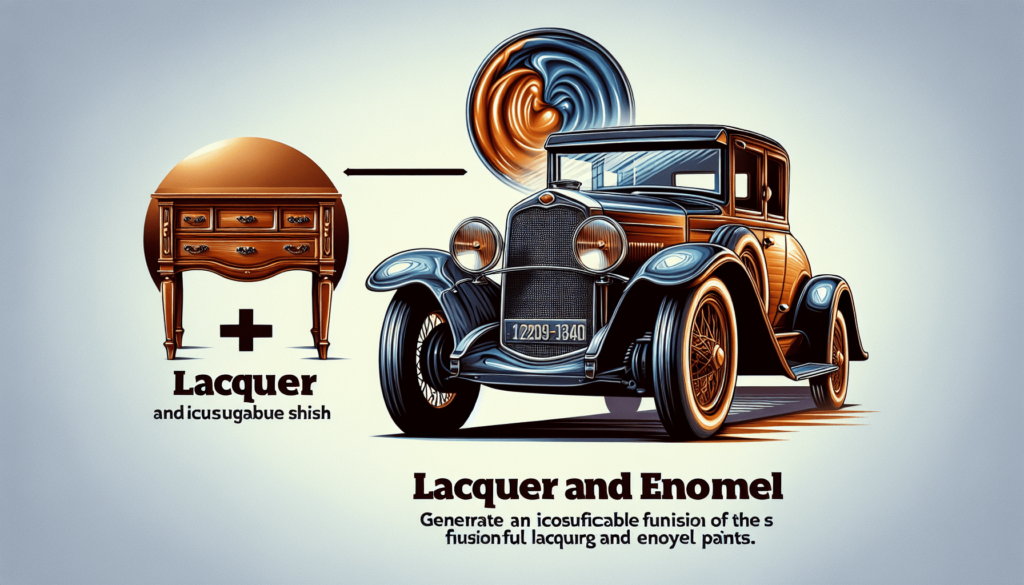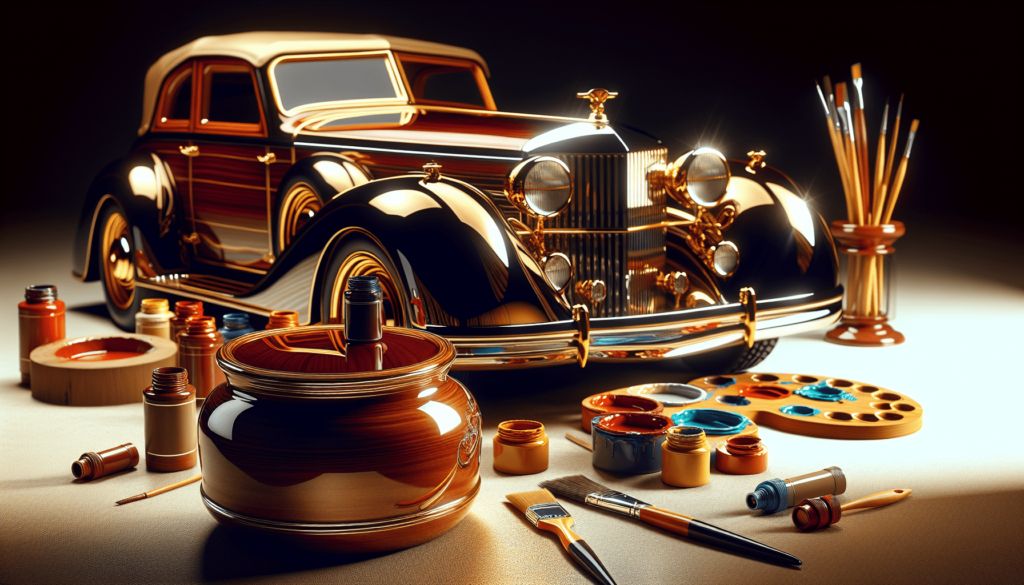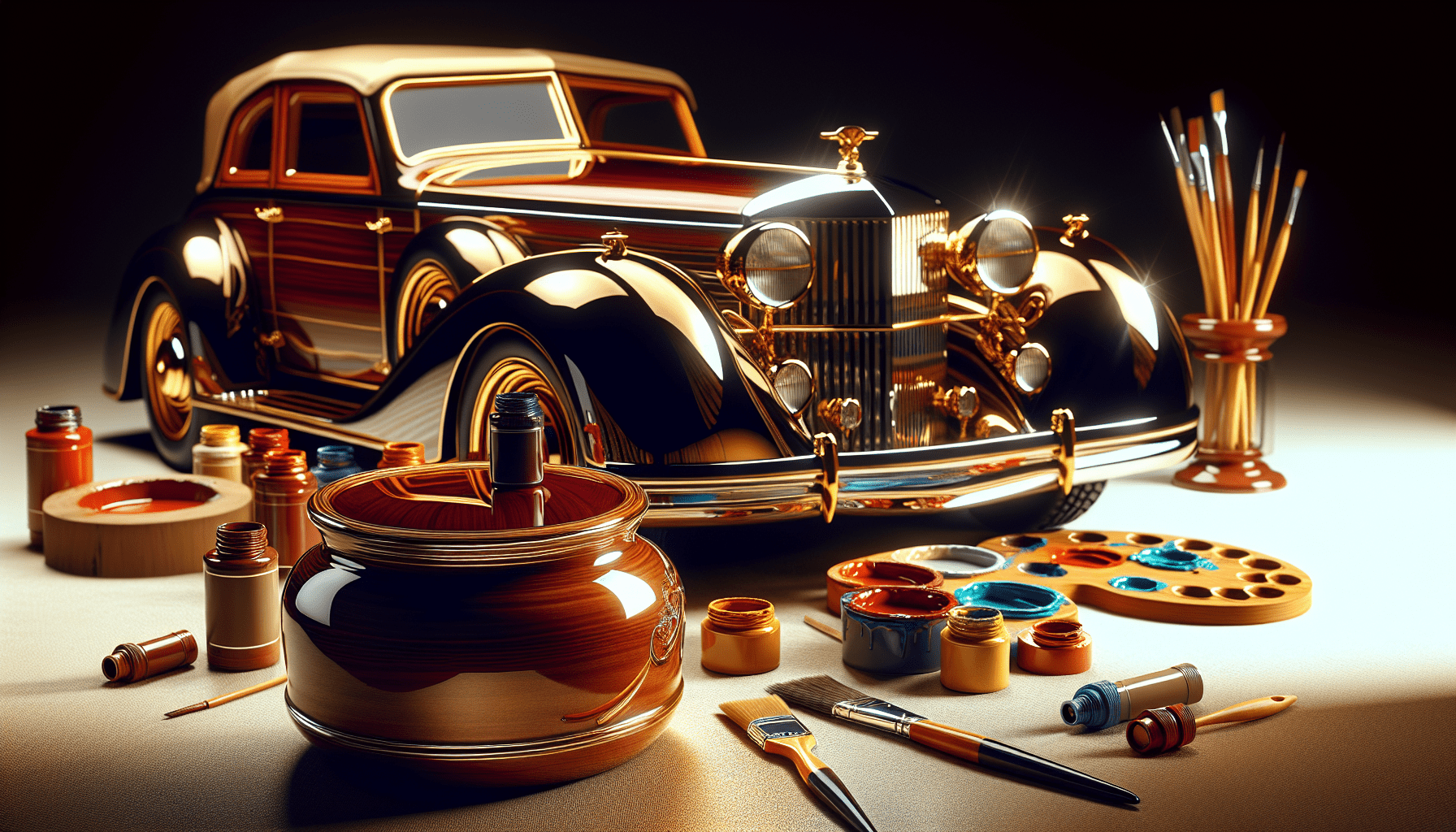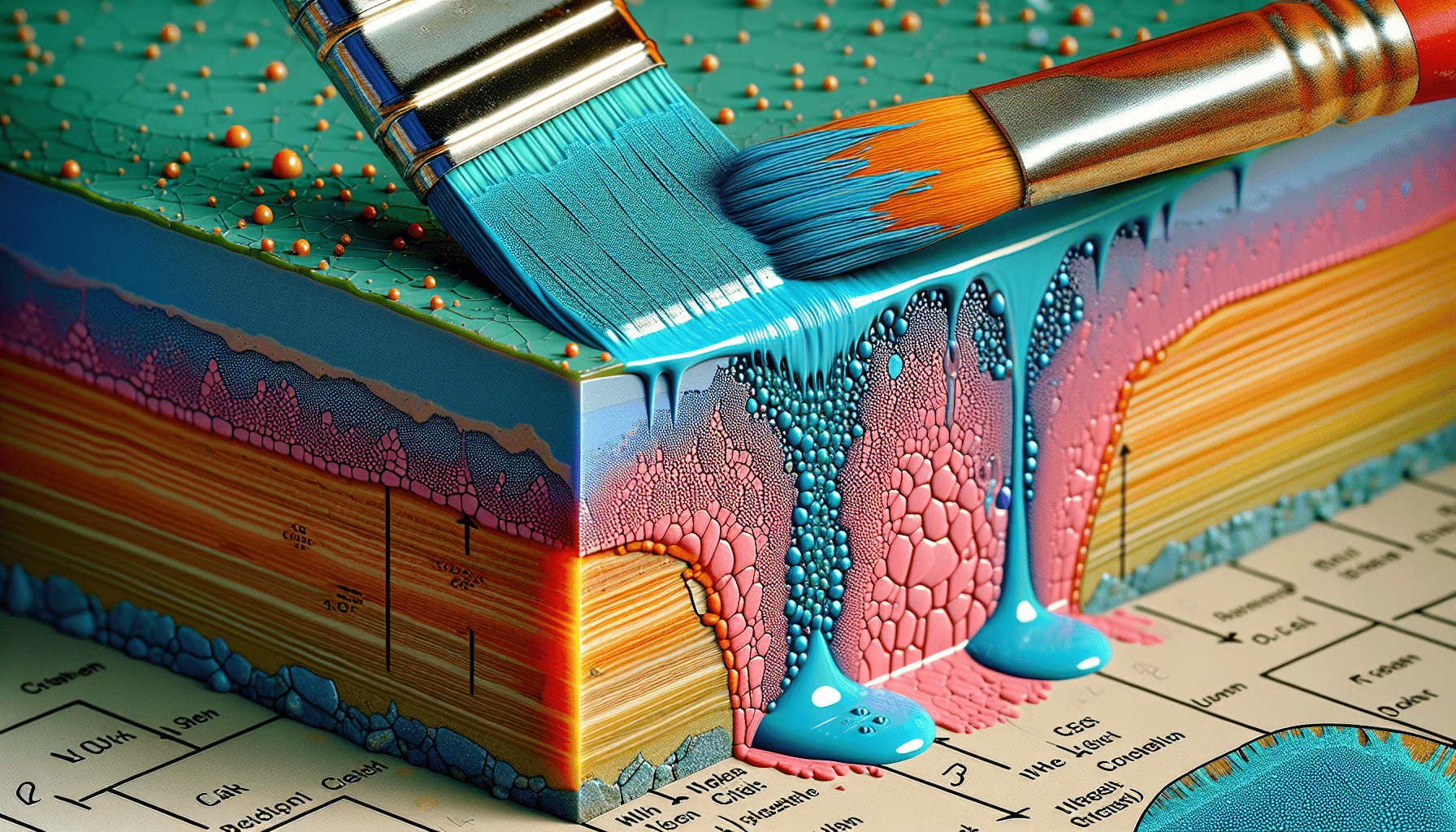In the world of painting and finishing, the compatibility of different products is of utmost importance, especially when it comes to achieving professional results. When it comes to the combination of lacquer and enamel paints, the question arises: Can you spray lacquer over enamel paint? This article aims to shed light on this common query, exploring the possibilities and considerations involved in using these two types of paint together. Whether you’re a DIY enthusiast or a professional painter, understanding the compatibility between lacquer and enamel paint is key to achieving a flawless finish that meets your desired aesthetic standards. So, let’s embark on this journey of discovery and unravel the secrets behind combining these two paint types.
What is Lacquer?
Definition of lacquer
Lacquer is a clear or colored coating that is commonly used in the finishing of wood, metal, and other surfaces. It is a type of varnish that provides a durable and glossy finish to the coated material. Lacquer is made from a solution of nitrocellulose or synthetic resins dissolved in solvents, which evaporate to leave a hard and protective layer on the surface.
Characteristics of lacquer
Lacquer has several key characteristics that make it a popular choice for finishing surfaces. Firstly, it dries quickly, allowing for efficient application and minimizing downtime. Lacquer also provides a smooth and glossy finish, enhancing the aesthetic appearance of the coated material. Additionally, lacquer is resistant to moisture, chemicals, and abrasion, offering protection and durability to the underlying surface.
Uses of lacquer
Lacquer finds extensive use in various industries and applications. In woodworking, lacquer is employed to enhance the natural beauty of the wood grain and protect the surface from scratches and wear. It is commonly used on furniture, cabinets, and musical instruments. In the automotive industry, lacquer is utilized to provide a high gloss finish to car bodies, offering both protection and visual appeal. Lacquer is also used in the manufacturing of electronics, jewelry, and artwork, among other applications.
What is Enamel Paint?
Definition of enamel paint
Enamel paint is a type of surface coating that is known for its high durability and glossy finish. It is made by combining a pigment with a binder that forms a hard and protective film when applied to a surface. Enamel paint can be oil-based or water-based, with the former being more traditional and the latter being more environmentally friendly.
Characteristics of enamel paint
Enamel paint has several characteristics that make it desirable for various applications. It provides a durable and long-lasting finish that is resistant to fading, chipping, and staining. Enamel paint also offers excellent coverage, requiring fewer coats compared to other types of paint. Additionally, it adheres well to different surfaces, including wood, metal, and ceramics. Enamel paint is available in a wide range of colors, allowing for versatile and customizable finishes.
Uses of enamel paint
Enamel paint is commonly used in both residential and commercial settings. It is frequently applied to interior and exterior surfaces, including walls, doors, trim, and furniture. Enamel paint is also extensively used in the automotive industry for painting vehicles and motorcycle parts. Its durability and resistance to harsh weather conditions make it suitable for outdoor applications. Furthermore, enamel paint is utilized in industrial settings to coat machinery, equipment, and metal structures that require protection against corrosion and wear.

Compatibility of Lacquer and Enamel Paint
Understanding compatibility
Determining the compatibility of lacquer and enamel paint is crucial before attempting to spray lacquer over enamel paint. Compatibility refers to the ability of two different coatings to bond together without adverse reactions that would affect the final finish and durability. Due to variations in formulation and drying mechanisms, not all types of lacquer and enamel paint are compatible with each other. It is essential to consider certain factors and perform compatibility tests to ensure successful application and long-term performance.
Factors to consider
Several factors should be taken into account when considering the compatibility of lacquer and enamel paint. One key factor is the solvent system used in each type of coating. Lacquer is typically solvent-based, while enamel paint can be either solvent-based or water-based. Ensuring that the solvents are compatible is critical to prevent issues such as softening or blistering of the underlying enamel paint.
Another factor to consider is the drying and curing mechanism of each coating. Lacquer dries by evaporation of solvents, whereas enamel paint forms a film through a chemical reaction known as crosslinking. Understanding the compatibility between these drying mechanisms is crucial to avoid issues such as incomplete drying or poor adhesion.
Surface preparation is also an important consideration. The surface should be clean, dry, and free from any contaminants that could interfere with the adhesion of the lacquer or enamel paint. Any existing coatings or finishes should be thoroughly sanded or removed to ensure proper bonding of the new layers.
Testing for compatibility
To determine the compatibility of lacquer and enamel paint, it is recommended to perform a small-scale test before proceeding with the full application. Choose an inconspicuous area or a test panel and apply a thin layer of lacquer over the enamel paint. Allow the coating to dry and cure according to the specified times.
Inspect the test area for any signs of adhesion issues, such as blistering, cracking, or peeling. Additionally, observe the overall appearance of the coating, including the gloss level and color integrity. If the lacquer adheres well and does not cause any adverse reactions, it is likely compatible with the enamel paint.
Spraying Lacquer Over Enamel Paint
Advantages of using lacquer over enamel paint
Spraying lacquer over enamel paint offers several advantages. Firstly, lacquer provides a high-gloss and smooth finish, enhancing the overall appearance of the coated surface. It can create a deep and lustrous shine that is desirable in many applications. Lacquer is also known for its fast-drying properties, allowing for quick application and achieving a smooth finish without the need for extensive sanding and buffing.
Preparing the surface
Before applying lacquer over enamel paint, it is essential to properly prepare the surface. Thoroughly clean the area to remove any dust, dirt, or grease. Remove any loose or flaking paint from the enamel surface by lightly sanding. Wipe the surface with a tack cloth to eliminate any remaining dust particles.
Choosing the right lacquer
Selecting the appropriate type of lacquer is crucial for achieving compatibility and desired results. Consider factors such as the substrate material, intended use of the coated surface, and the desired finish. Lacquers can vary in terms of formulation, solvent system, and application method. It is recommended to choose a lacquer specifically designed for use over enamel paint to ensure compatibility and optimal performance.
Applying the lacquer
When spraying lacquer over enamel paint, it is important to follow proper application techniques. Use a high-quality spray gun or airbrush for an even and controlled application. Apply thin and multiple coats, allowing sufficient drying time between each coat. This helps to build up a smooth and consistent layer of lacquer while minimizing the risk of runs or drips. Ensure proper ventilation during the application process to avoid inhalation of fumes.
Drying and curing process
After applying the lacquer, allow sufficient time for drying and curing. Follow the manufacturer’s instructions regarding drying times and recommended curing methods. Proper drying ensures that the lacquer forms a hard and durable finish, while curing promotes full crosslinking and enhances the overall performance and longevity of the coating. Avoid subjecting the freshly applied lacquer to excessive moisture or physical stress during the curing process.

Potential Issues and Considerations
Imperfections and reactions
When spraying lacquer over enamel paint, there is a possibility of imperfections and adverse reactions. These can include blushing, bubbling, or softening of the underlying enamel paint. These issues may arise due to incompatibility between the lacquer and enamel paint, improper surface preparation, or incorrect application techniques. It is important to be aware of these potential issues and take necessary precautions to minimize their occurrence.
Incompatibility problems
Incompatibility between lacquer and enamel paint can lead to various problems, such as poor adhesion, blistering, or wrinkling. Incompatibility issues may arise due to differences in formulation, solvent systems, or drying mechanisms. To avoid such problems, it is crucial to ensure compatibility through proper testing and selection of compatible products.
Effect on color and finish
Spraying lacquer over enamel paint may alter the color and finish of the coated surface. Lacquer can enhance the glossiness and depth of the finish, but it may also slightly darken or change the color. It is recommended to test the lacquer on a small inconspicuous area or a test panel to evaluate any potential color or finish changes before applying it to the entire surface.
Longevity and durability
The longevity and durability of the lacquer over enamel paint depend on various factors, including the quality of the coatings, surface preparation, and environmental conditions. While lacquer provides a protective layer, its durability can be influenced by factors such as exposure to UV radiation, moisture, and abrasion. It is important to consider the intended use and maintenance requirements of the coated surface to ensure long-term performance.
Safety precautions
When using lacquer and enamel paint, it is important to take appropriate safety precautions. This includes working in a well-ventilated area to minimize exposure to fumes and using personal protective equipment such as gloves and respiratory protection. Adhere to the manufacturer’s guidelines and follow proper disposal procedures for any hazardous materials used during the application process.
Alternatives to Spraying Lacquer Over Enamel Paint
Using enamel clear coat
Instead of spraying lacquer over enamel paint, an alternative option is to use an enamel clear coat. Enamel clear coat is specifically designed to be compatible with enamel paint and provides a protective layer without changing the color or finish of the underlying paint. It offers similar advantages in terms of durability and glossiness, while eliminating the potential issues of compatibility and color changes associated with lacquer.
Applying lacquer on a different surface
If the compatibility between lacquer and enamel paint is uncertain or if concerns about potential issues exist, another option is to apply lacquer on a different surface. Instead of spraying lacquer directly over enamel paint, consider applying it on a separate layer or surface, such as a clear coat or primer. This allows for the advantages of lacquer to be utilized while minimizing the risk of incompatibility or adverse reactions.
Choosing a compatible topcoat
In cases where lacquer is not compatible with enamel paint or if compatibility concerns remain, selecting a compatible topcoat may be a suitable alternative. There are various topcoats available that are specifically designed for use over enamel paint. These topcoats provide similar qualities and protection as lacquer, ensuring compatibility and enhancing the longevity and appearance of the coated surface.
Frequently Asked Questions
Can you spray lacquer over oil-based enamel paint?
Yes, it is possible to spray lacquer over oil-based enamel paint. However, it is important to ensure compatibility between the two coatings and perform the necessary compatibility tests before proceeding with the full application. Factors such as solvent systems, drying mechanisms, and surface preparation should be taken into consideration.
Can you spray lacquer over water-based enamel paint?
Spraying lacquer over water-based enamel paint can be possible, but compatibility should be thoroughly tested due to differences in formulation and drying mechanisms. It is advised to perform a small-scale test before proceeding with the full application to assess the compatibility and potential reactions between the lacquer and water-based enamel paint.
Do you need to sand the enamel paint before applying lacquer?
Yes, it is generally recommended to lightly sand the enamel paint before applying lacquer. Sanding helps to create a rough surface that improves the adhesion of the lacquer. It also helps to remove any imperfections or contaminants on the enamel paint, ensuring a smooth and even finish.
What is the drying time for lacquer over enamel paint?
The drying time for lacquer over enamel paint can vary depending on various factors, including the type of lacquer, environmental conditions, and the number of applied coats. It is important to follow the manufacturer’s instructions regarding drying times and recommended curing methods to ensure proper drying and curing of the lacquer.
Can you apply lacquer on top of multiple layers of enamel paint?
It is possible to apply lacquer on top of multiple layers of enamel paint. However, it is crucial to ensure proper compatibility between the lacquer and the underlying layers of enamel paint. Thoroughly test for compatibility and consider factors such as drying mechanisms, solvent systems, and surface preparation before proceeding with the full application.
Conclusion
Summary of findings
Lacquer is a coating that provides a glossy and durable finish to various surfaces, while enamel paint is known for its durability and glossy appearance. Determining the compatibility of lacquer and enamel paint is crucial before attempting to spray lacquer over enamel paint.
Compatibility depends on factors such as solvent systems, drying mechanisms, and surface preparation. Performing compatibility tests on a small scale is recommended to assess any potential issues or adverse reactions.
Spraying lacquer over enamel paint offers advantages such as a high-gloss finish and fast drying properties. Proper surface preparation, choosing the right lacquer, and following appropriate application techniques are essential for successful results.
Potential issues and considerations include imperfections, incompatibility problems, changes in color and finish, longevity and durability, and safety precautions. Alternative options include using enamel clear coat, applying lacquer on a different surface, or choosing a compatible topcoat.
Tips for successful application
- Thoroughly clean the surface and remove any loose or flaking paint.
- Select a compatible lacquer specifically designed for use over enamel paint.
- Apply thin and multiple coats of lacquer, allowing sufficient drying time between each coat.
- Follow proper safety precautions, including working in a well-ventilated area and using personal protective equipment.
Final thoughts
Spraying lacquer over enamel paint can be a viable option for enhancing the appearance and durability of coated surfaces. However, it is crucial to ensure compatibility and perform necessary tests to minimize potential issues. Proper surface preparation, choosing the right products, and following appropriate application techniques are key for achieving successful results. By considering these factors and taking necessary precautions, you can achieve a professional and long-lasting finish.


